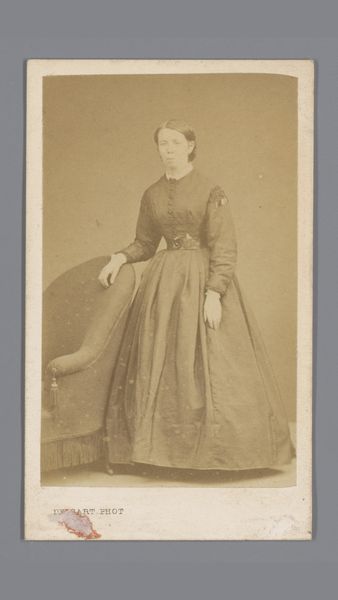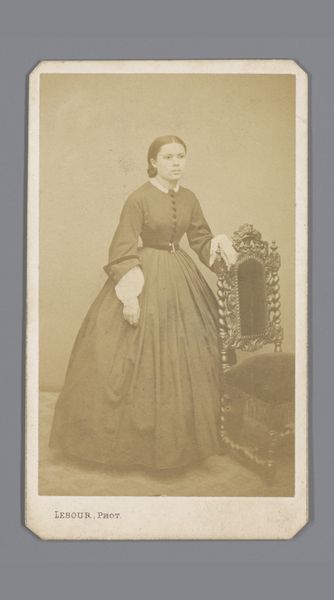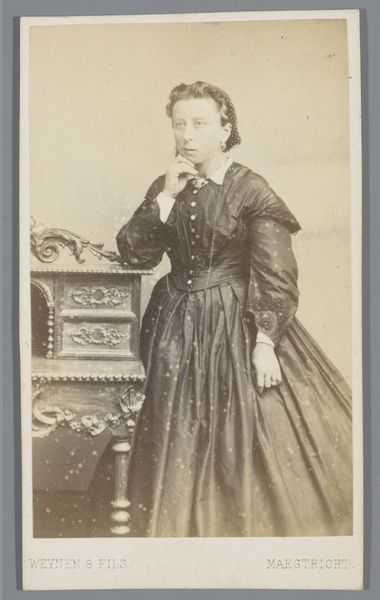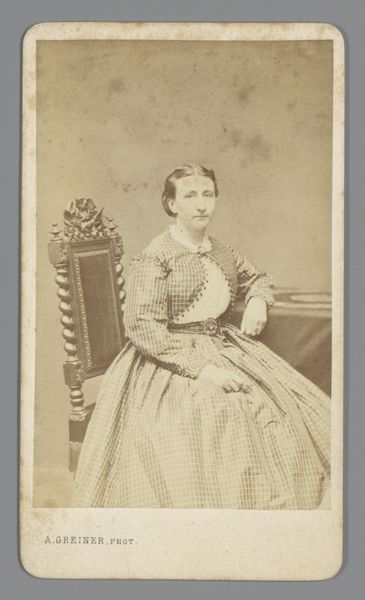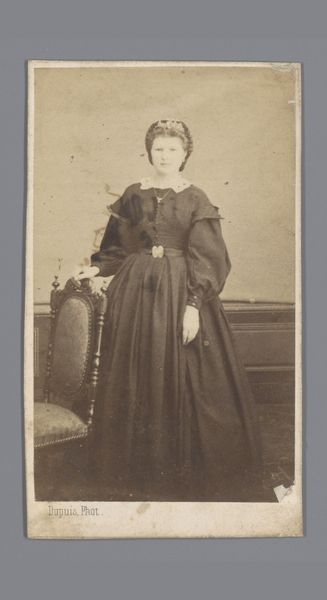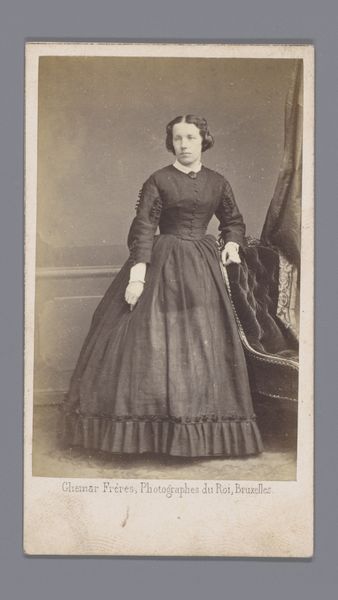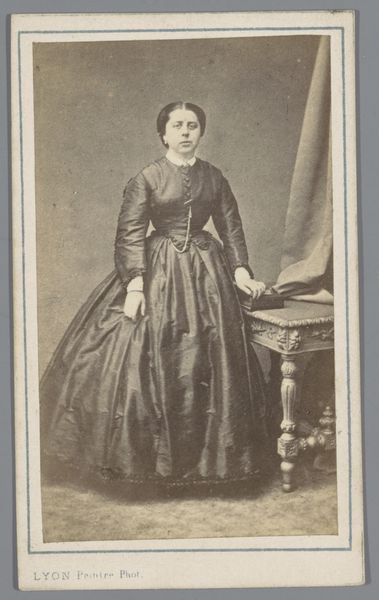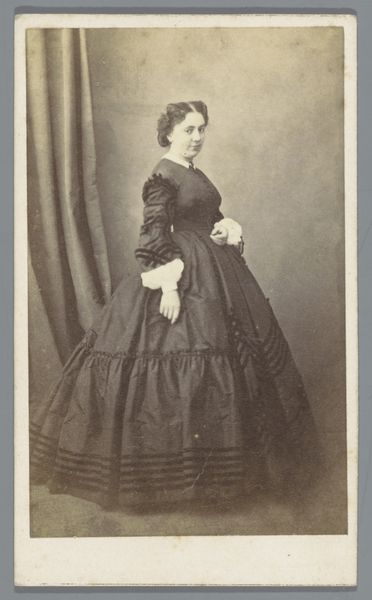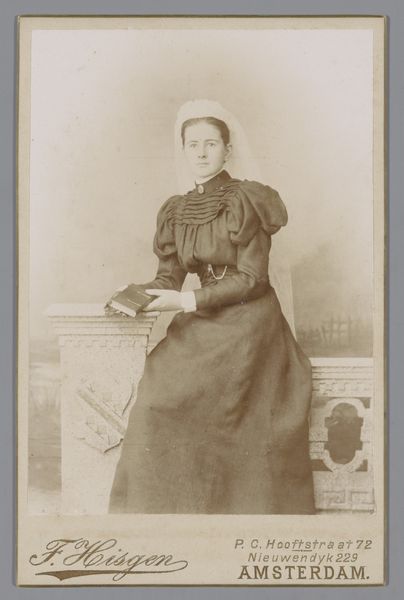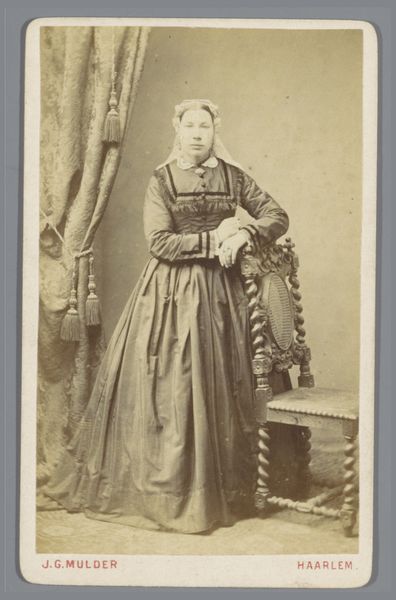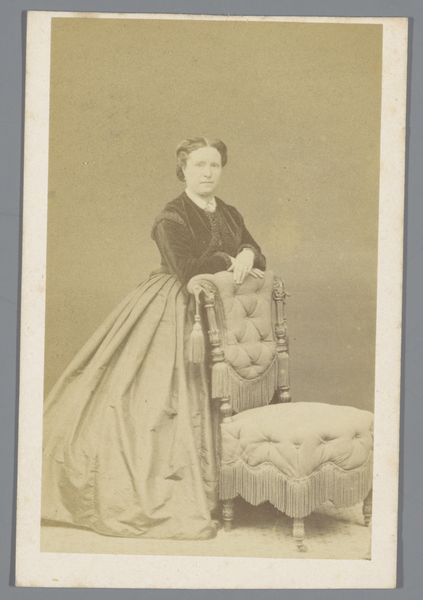
photography
#
portrait
#
photography
#
genre-painting
Dimensions: height 106 mm, width 62 mm
Copyright: Rijks Museum: Open Domain
Curator: This intriguing portrait is attributed to Alphonse Joseph Lebour and is entitled "Portret van een onbekende vrouw bij een stoel," or "Portrait of an Unknown Woman by a Chair," and thought to be created between 1862 and 1866. It is a photographic portrait, falling into the genre painting category. What strikes you first? Editor: The sitter appears burdened, or perhaps simply resigned. The light emphasizes the rigid set of her jaw and the downcast gaze. There’s an austerity here. I immediately consider how this photograph fits, or resists, Victorian ideals of femininity. Curator: Absolutely. The political weight of such images can't be understated. Photography in this era was becoming more accessible, yet portraiture still signified a certain status. We have to consider who had the access, the means, and the *agency* to commission and disseminate images. Who is centered, who is visible? Are certain social positions being validated here, while others are simultaneously obscured? Editor: And it prompts questions about the woman's individual experience within those structures. Was she conscious of participating in an aesthetic project? I can only wonder. There's the question, too, of what stories her clothing tells; those full sleeves and that dark, weighty dress also say something about wealth. The carefully ornamented chair too, perhaps suggesting a particular aspiration, an identity being performed for the camera. Curator: Right, the "performance" aspect of early photography is fascinating. There are often signifiers in these pieces we need to decode – how much of this woman’s identity, beyond what her immediate society might understand about wealth or domestic position, might be accessible to a contemporary reading? I'm also curious how Lebour’s position shaped the final result – were their power dynamics to be considered during this particular moment? Editor: Those power dynamics would’ve been complex. Given Lebour’s authorship, what choices did he make in staging the shot? How much freedom did the sitter have to express herself? Curator: It all feeds into understanding the Victorian gaze, how images controlled or created a framework for how one looked, existed, and even believed themselves. Editor: Indeed, a simple image can open up so many fascinating areas to reflect upon. Curator: A point worth remembering when examining portraits.
Comments
No comments
Be the first to comment and join the conversation on the ultimate creative platform.
